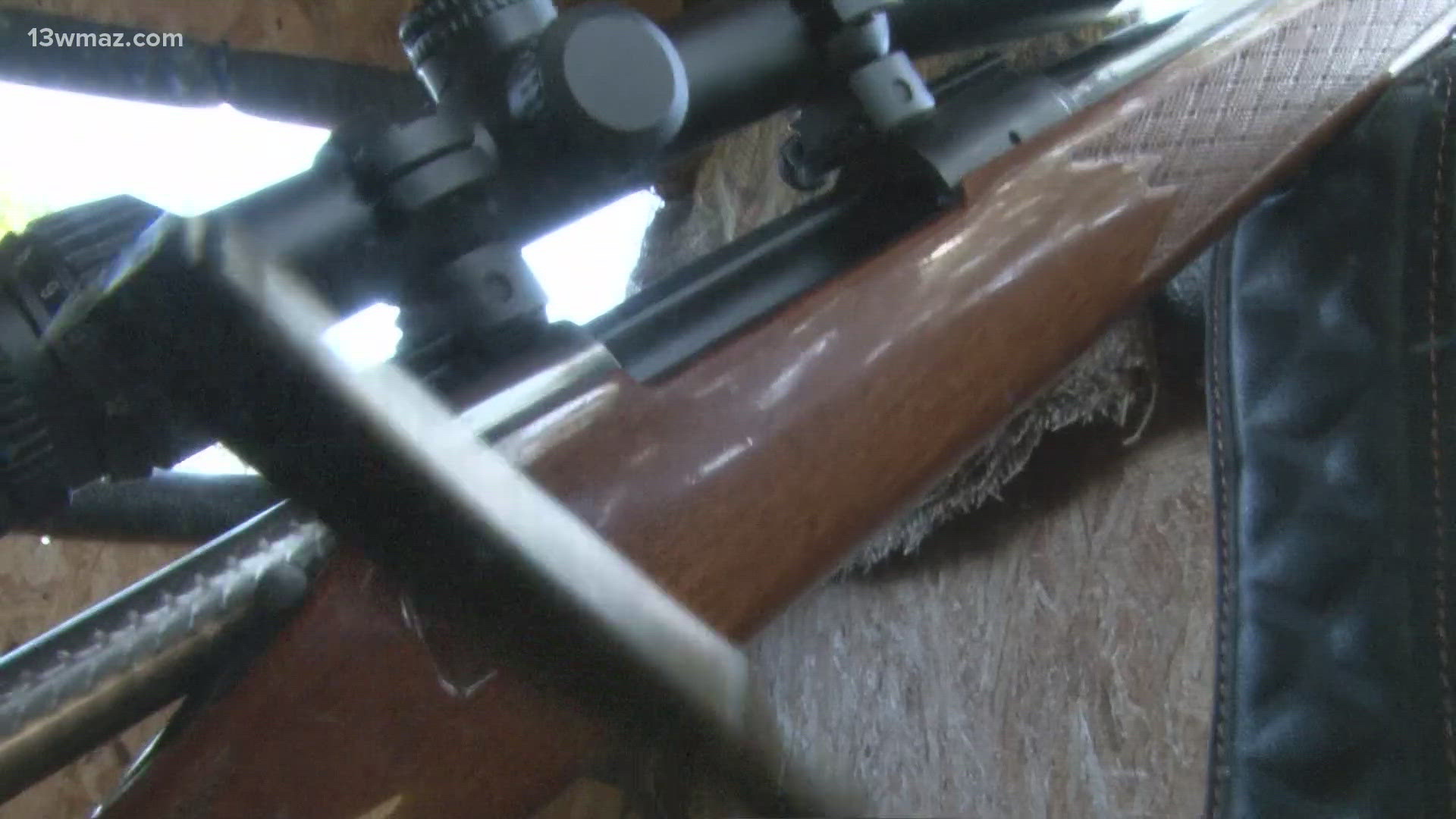DODGE COUNTY, Georgia — A box on a ladder in the woods in his hunter's uniform, Thomas Dykes says he's been doing this for a long time.
“I get buck fever,” he said. “The day I lose that is the day I quit hunting."
Hunting deer has been Dyke’s hobby since age 11, but a lot has changed since then.
“When I was young, hunting was a couple of hundred dollars, and now that I'm older, hunting is a couple of thousand dollars,” he explained. "God, the prices have gone skyrocket."
Last week, we talked about how white-tail deer are eating up farmer's crops and their profits. But Dykes says that the expensive hobby of hunting and could be causing deer populations to rise.
Dykes says to hunt deer, he personally needs a hunting license, a lease for hunting land, guns, ammo, deer feed, the machines to dispense it, a processor for the meat and more.
“The price of the bullets. I used to buy a box of 20 for $12. Now, they're $45, $50, and $60,” Dykes explained. “You used to buy a bag of corn– a 50-pound bag of corn– for $6, but last year it was $12 for a 50-pound bag.”
Georgia hunting regulations say you can hunt two bucks and 10 doe. However, Dykes says he can't afford to kill that many and clean and process their meat without wasting it.
“Four deer has cost me over $400 dollars,” he said.
Dykes says this may be discouraging hunters, especially younger ones. He says they have many expenses already and less exposure to hunting. Dykes says that may increase deer populations
“The hunting expense, it's just not something they can afford,” he said.
The Georgia Department of Natural Resources' Charlie Killmaster is a deer biologist. He says the number of deer statewide hasn't increased.
“It's actually been relatively stable over the last couple of years, which is part of our population goals," he said. "Now, there are certainly local areas that might have seen population increases. A new owner that decides not to hunt the population, something like that, the local deer population increases naturally. "
Killmaster says most hunters don't shoot as many deer as allowed anyway.
“The average hunter may kill between one, three deer. It's a point of diminishing returns essentially,” he explained.
Killmaster says deer populations eating crops and affecting farmers is a regional issue problem.
“Irrespective of deer populations– every state has different regulations and they’re in different states of over-abundance or under-abundance, but this is a regional issue. I think a lot of it is that they’re feeling the pain financially. Maybe a few years ago, maybe the damage was, maybe, similar, but it was more tolerable because it didn’t cost as much to replant,” he said.
However, Killmaster says there are solutions.
“First thing I would suggest is they encourage hunting on the property during deer season. Maybe working with the landowner and whatever hunters using the property to increase the female harvest on that property,” he explained. “Then aside from that, applying for those permits out of deer season to control it when the crops are actively growing."
That allows hunters like Dykes to hunt and help control the deer population.
“The hunter benefits, everyone benefits,” he says.
Killmaster also says the off-season permits to kill nuisance deer during the non-hunting season are free.

